Vikings arms

Always ready to fight
The Vikings were and are known primarily as warriors. No wonder, considering that every free man (meaning everyone except the slaves) had a right and practically a duty to be armed. The northerners was carrying at least a seax (old Germanic knife) literally everywhere and kept weapons close to their beds to make sure they could grab them instantly after waking up. It was also very honour-based society where duels were not uncommon.
Despite of omnipresence of weaponry and everyone being potential soldier, there was no official army for centuries. Most probable reason is that population like this one simply did not need any army for its protection. Anyway, all the raids against various European targets (at least the ones before 11th century) were actually more like pirate style plundering only in massive scale, even though often lead and funded by the monarch himself. Attackers did not use any tactics nor battle formations. In this chaos everyone rather fought by his own with a strong motivation of earning desired glory and also gaining his share from the war loot. It was the arms being part of Vikings everyday life combined with intense passion for combat which decided the battles.
There was a special kind of fighters called berserks. The berserks were elite combatants who believed they are protected by Odin, the god of war, and therefore they fought without any armour, just with shield in their hands. During the battles they had got themselves into a trance which made them furious killing machines ignoring any pain from their wounds.
Nevertheless, it would be a mistake to picture all Vikings as brutal blood-loving barbarians who spent whole their lives pillaging, although some fighters may have been very close to that. Northerners were also good merchants for instance. Furthermore, their excellent ships and navigational skills enabled them to settle in Iceland, Greenland and eventually in Newfoundland by America - whole 500 years before Christopher Columbus discovered the continent.
Offensive weapons
Equipment of every fighter simply depended on what he could afford. Only rich Vikings owned swords. Typical sword was about 90cm (35 in) long, one handed and carried in wooden scabbard covered in leather and hanged on the shoulder. First swords had cutting edge only on one side, but later double-sided ones (often featured with fullers) appeared and eventually replaced them.
Popular among Vikings were combat axes. They had various sizes and head shapes but always were well balanced and with long handles. Vikings liked to decorate their swords and axes and sometimes were giving them names. They buried them in graves with fallen warriors. Least expensive and most common weapon was a spear. Vikings sometimes started the battle with a ritual of casting a spear behind the enemy as a sacrifice to Odin.
In the course of time the arsenal of battle arms witnessed couple innovations. About the end of 10th century a famous dreadful double bitted axe was introduced. At the same time Nordic nations converted to Christianity which meant slowly adjusting of military affairs to become more resembling the rest of Christian Europe. Finally, in 1066 in the battle of Hastings the Normans lead by William the Conqueror firstly used crossbows and it showed up to be beneficial.
Helmets and shields
Everyone likely has seen a picture of Viking wearing a helmet with two horns. No matter how impressive it may look, in fact, this kind of protection would be unpractical for use in real battle and Nordic raiders did not wear it. This image was perhaps created in the actual times of invasions in order to portray the attackers as devilish. Wealthy Vikings wore iron helmets while the poorer ones had them made from leather. Similar situation was with the armour when chain mail was extremely expensive.
Classic Vikings shields were made of wood, round, up to a meter in diameter with a central boss. They could be painted with different colours and decorated with motives usually inspired by Norse mythology. Sometimes the edge was featured with a metal rim which might be decorated as well or the shields of richer fighters could be strengthened and decorated by more metal fittings. Later the European armies begun to profit from the advantages of oval shields over the circle ones – the ovals covered more. Vikings improved the idea with their almond shaped shields (sometimes called Norman shields or Kite shields) which were providing the same service, but were lighter. Soon they spread in other countries and became typical sign of that era.

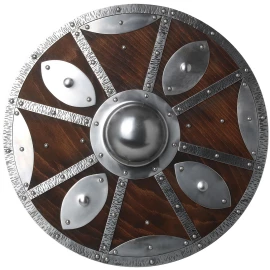
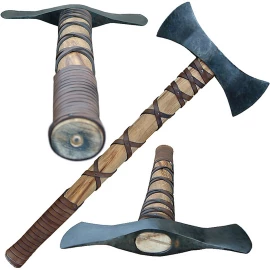
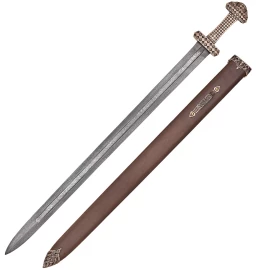
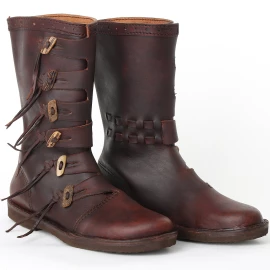
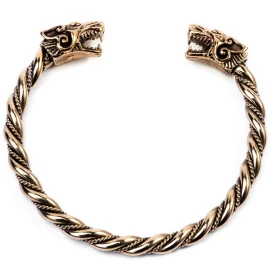

Comments (1)
Hello I am from Indian Medieval Armour as a manufacturer & Exporter of all types of Roman, Medieval, Viking and historic era products like helmets, Armour, chain mail, shoes etc. We are from India and doing business with overseas buyer smoothly and trying to join you also to provide you excellent quality goods in reasonable price. We have well expert team of craftsmen (Blacksmith) which make our quality excellent and make production on time. We can make products according to your desire or given images as well. We will beat any price anywhere on same merchandise. So please feel free to ask if you have any query we are happy to reply your all queries. Looking forward to hear from you www.indianchainmailarmour.com Warm Regards